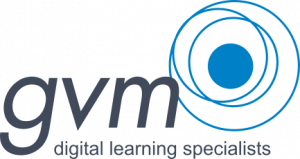About fifteen years ago I was asked to help redesign a CPD program.
As you always should, we started by getting to know our audience and we learned as much as we could about the profession and its workers. One thing that was clear was that the people involved were good. I mean really good. The level of knowledge and experience they possessed was clearly going to be both our best asset, and our greatest challenge.
Lecturing to those with practical experience is a mugs’ game. It’s not merely pointless but counterproductive when the audience knows your material’s assumptions and limitations. It’s those little simplifications we have to make in a theoretical context that lead to those who has worked in the “real world” offering wry smiles and then dismissing the program as not credible.
On the other hand, experts well…. um… do tend to like the sound of their own voice…
did I just say that???
Sorry I meant to say that they are eager to act as mentors. Including to other equally experienced experts. (My turn to wear a wry smile…)
More seriously… what an asset! How about not having to make all those little simplifications? How about drawing on practical experiences and applications from the audience to turn black and white into shades of grey? After all – our audience had finished with the black and white after their graduation ceremonies… when they began to learn what no teacher can offer a class.
One thing I learned is not to fight an adult audience and instead to harness them.
Building interactivity into the eLearning we created made it more rewarding and more valuable at the same time. It required us to concede we were not the smartest people in every room as regards the topic and instead be the smartest learning environment creators in the room (our job, after all!)
Multiple choice – the enemy of engagement
We never asked a question with a right and a wrong. We asked better questions with multiple valid answers depending on circumstances. These became decision points in a branching scenario where people could form their own conclusions as to what was the best decision.
These were interspersed with reflective questions… “In the following situation, what would you recommend?” is an invitation to offer wisdom. We would wait for a considered submission and then take it seriously in one of the following ways:
- asking the learner to compare what they had offered to something presented as “here is our response to the same situation. Please provide your thinking as regards the differences”
- submitting the response for review by peers – we took the module response and injected it into a discussion forum for peers
- modifying the comparison approach (1 above) to inject automatically into the module the last 3 responses given by others to the question, or
- inviting the respondent to categorise their approach into one of a set of options, then having the LMS keep track of the proportion of respondents who chose each category to that it could inject a real-time graph of the distribution of colleges’ thinking.
All this was live and automated. Better yet, it created new content – the responses were used to improve our modules and add more insightful text. The modules themselves served to inform us when we were making assumptions or exhibiting unconscious bias (our audience loved to pick us up!)
It was always fascinating to look at the way the overall population’s viewpoint evolved over time – the graphs from type 4 above would slowly change as new ideas were established in the sector and this in turn allowed us to update modules to inform our audience about changes to prevailing ideas.
Taking it forth… a community
We did not view our duty as ceasing on the last page of a module. It was critical that any momentum we’d built (often exhibited in the form of professional debate) continue, but that required us to consider how to build a sense of community online?
Clearly the obvious approach involves social media – discussion boards and the like and these proved valuable especially when the discussions were guided by a respected expert and built around a scenario.
Another really successful approach was inviting the former participants back to help us review and comment on the in-module offering of those who came after them.
A third approach was to draw in the collected contributions and use the ideas from our learners reflective responses to create new scenarios around the same topic – often shorter – and build them into new microlearning items to generate yet more responses.
Our approach was so successful that an entire sector’s training was transformed – you can still hear the differences in how its workers discuss their ideas to this day. Meanwhile their peak body moved from a century old membership-based funding model to training-based funding model with one of the country’s most profitable training subsidiaries within eighteen months.
I remain pretty proud of that…
